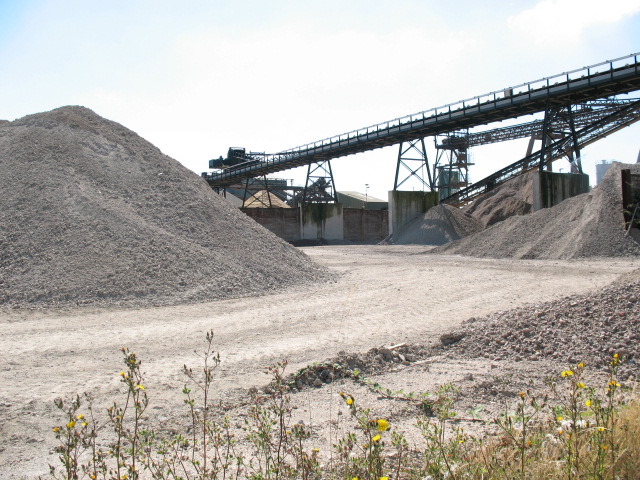Understanding Industrial Stormwater Requirements
The Multi-Sector General Permit (MSGP)
All industrial facilities in the United States must apply for and obtain coverage under the EPA or a state-regulated MSGP in order to be able to discharge stormwater regulated by the permit.
Allowable stormwater discharges differ by sector but are specified in the MSGP.
In this article, we’ll focus on the EPA MSGP and leave the state MSGPs for a different series.
2015 vs 2020 MSGP
The current (as of this writing) EPA MSGP was approved in 2015. After adding a couple of sectors in that permit, the total number of industrial sectors recognized under the 2015 MSGP is 29. For now, it doesn’t look like any new sectors will be added under the 2020 MSGP.
The 2020 MSGP is currently in a public comment period that should end on May 1st, 2020. After that, changes may be made and the finalized version should go into effect later in 2020.
The proposed 2020 MSGP looks like it will make a significant number of changes, including requiring universal benchmark monitoring regardless of sector. When the 2020 MSGP is approved, we’ll keep you up-to-date with what has changed.
The Sectors
The EPA MSGP covers 29 sectors. These sectors may differ by state. The 29 sectors are:
- Sector A: Timber Products
- Sector B: Paper and Allied Products Manufacturing
- Sector C: Chemical and Allied Products Manufacturing
- Sector D: Asphalt Paving and Roofing Materials Manufactures and Lubricant Manufactures
- Sector E: Glass, Clay, Cement, Concrete, and Gypsum Product Manufacturing
- Sector F: Primary Metals
- Sector G: Metal Mining
- Sector H: Coal Mines and Coal Mining-Related Facilities
- Sector I: Oil and Gas Extraction
- Sector J: Mineral Mining and Dressing
- Sector K: Hazardous Waste Treatment Storage or Disposal
- Sector L: Landfills and Land Application Sites
- Sector M: Automotive Salvage Yards
- Sector N: Scrap Recycling Facilities
- Sector O: Steam Electric Generating Facilities
- Sector P: Land Transportation
- Sector Q: Water Transportation
- Sector R: Ship and Boat Building or Repairing Yards
- Sector S: Air Transportation Facilities
- Sector T: Treatment Works
- Sector U: Food and Kindred Products
- Sector V: Textile Mills, Apparel, and other Fabric Products Manufacturing
- Sector W: Furniture and Fixtures
- Sector X: Printing and Publishing
- Sector Y: Rubber, Miscellaneous Plastic Products, and Miscellaneous Manufacturing Industries
- Sector Z: Leather Tanning and Finishing
- Sector AA: Fabricated Metal Products
- Sector AB: Transportation Equipment, Industrial or Commercial Machinery
- Sector AC: Electronic, Electrical, Photographic and Optical Goods
- Sector AD: Reserved for Facilities Not Covered Under Other Sectors and Designated by the Director
Inspections
Routine Inspections
For facilities permitted under the EPA MSGP, quarterly routine inspections are required. The inspections must check the following areas:
- Areas where industrial materials or activities are exposed to stormwater;
- Areas identified in the SWPPP and those that are potential pollutant sources
- Areas where spills and leaks have occurred in the past three years;
- Discharge points; and
- Control measures used to comply with the effluent limits contained in this permit.
While the requirement is that routine inspections be conducted quarterly, the permit does require more frequent inspections if necessary based on your equipment and situation. Also, at least one of the quarterly inspections must be conducted during a time when stormwater discharge is occurring.
For inactive industrial facilities where no equipment or materials are exposed to stormwater, the schedule may be reduced to one inspection per year.
Quarterly Visual Assessment of Stormwater Discharges
Once per quarter, you must inspect each of your outfalls (if you have any) during or immediately following a stormwater discharge. You should collect the sample while stormwater is discharging from the outfall. Here are the things you must look for in the visual assessment:
- Color;
- Odor;
- Clarity (diminished);
- Floating solids;
- Settled solids;
- Suspended solids;
- Foam;
- Oil sheen; and
- Other obvious indicators of stormwater pollution
All of the inspections and visual assessments must be documented and kept with your SWPPP.
Stormwater Pollution Prevention Plan (SWPPP)
Prior to applying for coverage under the MSGP, you must prepare a SWPPP.
The SWPPP is intended to document the selection, design, and installation of control measures to meet the permit’s effluent limits. The SWPPP must include the following content:
- Stormwater Pollution Prevention Team
- The facility staff that are responsible for stormwater compliance
- Site Description
- This includes a description of the facility, but the biggest requirement is a site map showing everything that could possibly be related to stormwater runoff.
- Summary of Potential Pollutant Sources
- Description of Control Measures
- Schedules and Procedures
- Documentation to Support Eligibility Considerations Under Other Federal Laws
- Appropriate Signatures
- The SWPPP must be signed by a responsible corporate officer
Online Management
Perhaps the most convenient addition to the 2015 EPA MSGP is that it directly addresses the possibility of managing your SWPPP, inspections, permit, maps, and other documentation online.
This means that you can handle all of your stormwater requirements using an online tool. The only stipulation is that you can provide the EPA with a URL for your SWPPP in the NOI.
If you want to learn more about online stormwater management for industrial facilities, download our free whitepaper here.
Conclusion
Those are the EPA’s industrial stormwater requirements in a nutshell. The MSGP is a very long document, so we didn’t cover every intricacy. Make sure you give it a read if you have the time. You can find it here.
Keep in mind that we’ve covered the EPA requirements. Requirements in your state might vary from this. If you have any questions about your specific requirements or the best ways to manage your industrial stormwater program, leave a comment below or contact us!

